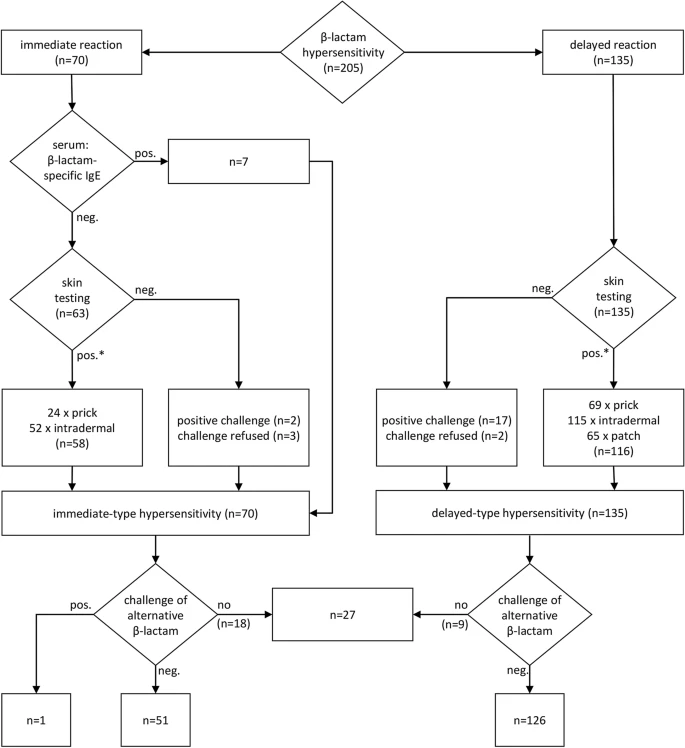- Research
- Open Access
Allergy, Asthma & Clinical Immunology
Allergy, Asthma & Clinical Immunology 16, Article number: 102 (2020)
We retrospectively evaluated data from 800 consecutive patients with suspected β-lactam hypersensitivity over a period of 11 years in a single German Allergy Center.
Results
β-lactam hypersensitivity was definitely excluded in 595 patients, immediate-type (presumably IgE-mediated) hypersensitivity was diagnosed in 70 and delayed-type hypersensitivity in 135 cases. Most (59 out of 70, 84.3%) immediate-type anaphylactic reactions were induced by a limited number of cephalosporins. Delayed reactions were regularly caused by an aminopenicillin (127 out of 135, 94.1%) and usually manifested as a measles-like exanthem (117 out of 135, 86.7%). Intradermal testing proved to be the most useful method for diagnosing β-lactam allergy, but prick testing was already positive in 24 out of 70 patients with immediate-type hypersensitivity (34.3%). Patch testing in addition to intradermal testing did not provide additional information for the diagnosis of delayed-type hypersensitivity. Almost all β-lactam allergic patients tolerated at least one, usually several alternative substances out of the β-lactam group.
Conclusions
We identified two patterns of β-lactam hypersensitivity: aminopenicillin-induced exanthem and anaphylaxis triggered by certain cephalosporins. Intradermal skin testing was the most useful method to detect both IgE-mediated and delayed-type β-lactam hypersensitivity.
| Full Text | PDF |

No comments:
Post a Comment